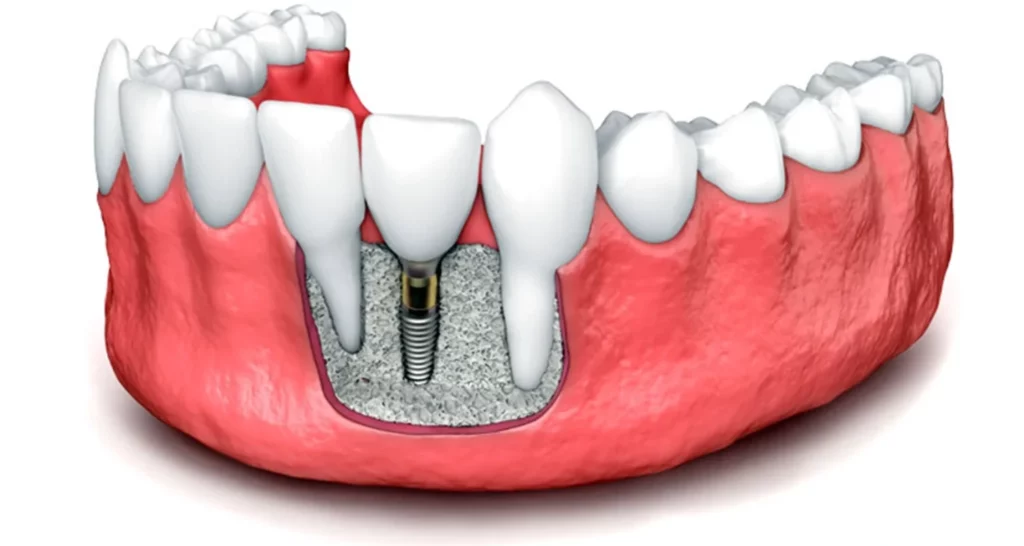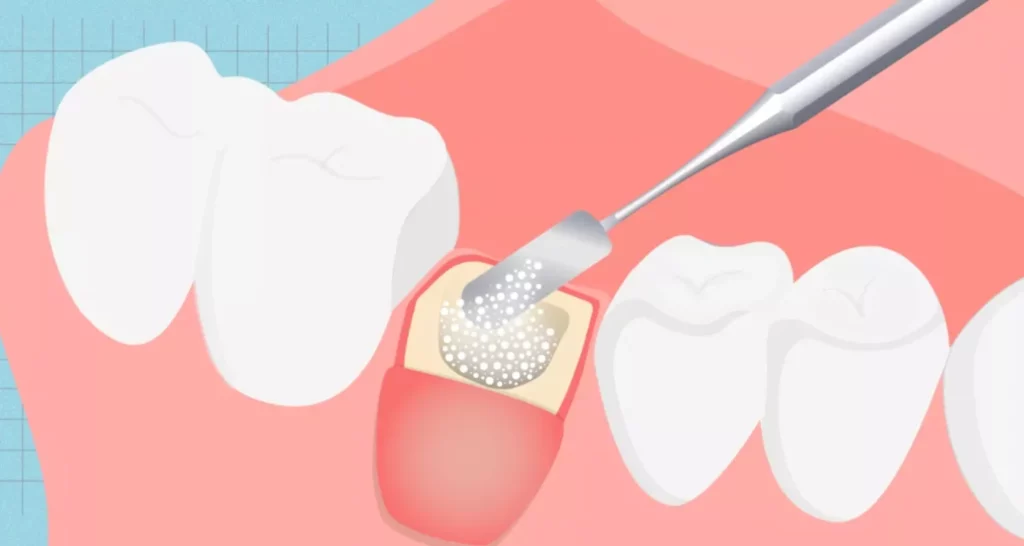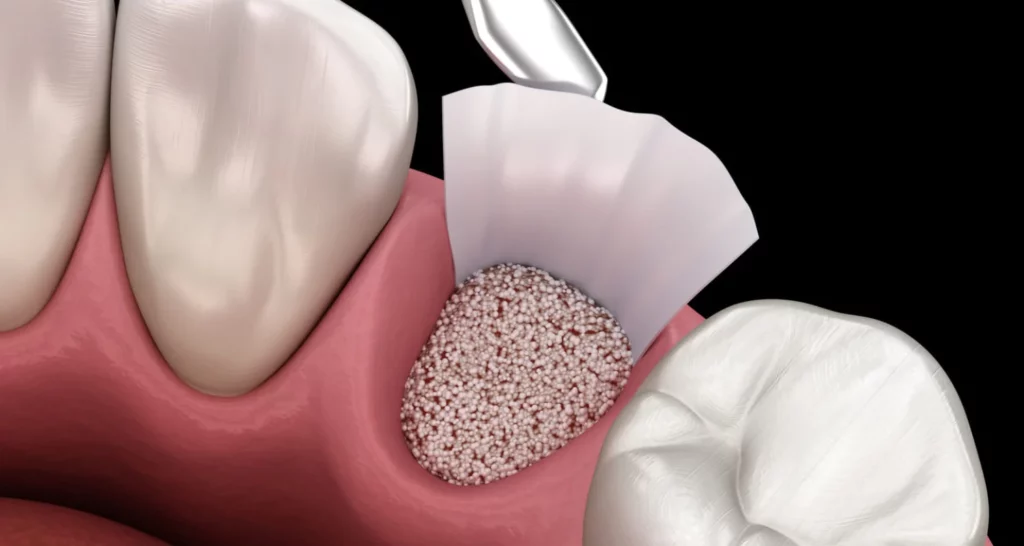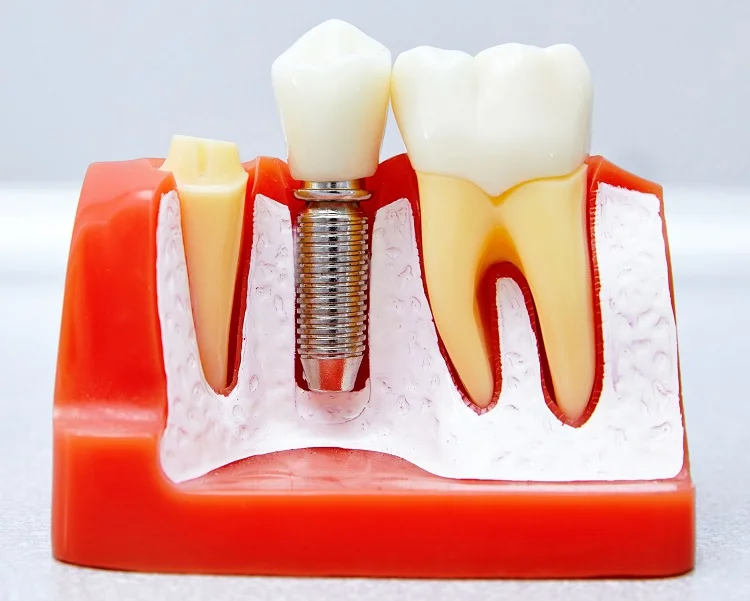Last Updated on: 7th June 2024, 11:54 am
✓ Fact Checked 🕓
❙ Our team of writers, editors, and medical experts rigorously evaluates each article to ensure the information is accurate and exclusively cites reputable sources.
❙ We regularly assess how the content in this article aligns with current scientific literature and expert recommendations in order to provide the most up-to-date research.
Dental bone graft is the most recommended surgical procedure in dental rehabilitation and reconstruction treatments, as it allows for the recovery of bone that has been lost in the gums due to trauma, congenital pathological situations or periodontal disease.
Dental bone graft allows for the restoration of aesthetic and functional aspects of the jaw and the dental system in general.
Through this therapeutic option, it is possible to:
● Fuse joints and reduce movement
● Rehabilitate fractured bones that have experienced bone loss
● Restore injured bone that has not healed
5 uses of dental bone grafts

There are five uses of dental bone grafts, and each one provides a solution to a specific oral health condition.
1. Ridge augmentation: When there has been a prolonged absence of teeth, the jawbone may become thinner. This type of graft increases the width and volume of the jaw, providing a stable base for oral rehabilitation.
2. Socket preservation: This procedure, also known as crest preservation, involves placing a bone graft in the socket immediately after a tooth extraction to fill the space left by the extracted tooth and prevent damage to the socket’s sides.
3. Sinus lift: The absence of upper posterior teeth causes the paranasal sinuses to drop, invading the space occupied by the roots of the teeth. In these cases, it is necessary to lift the sinuses and place a dental bone graft underneath to create a solid base that facilitates subsequent rehabilitation interventions.
4. Block graft: This surgical procedure adds bone tissue to an area with bone deficiency that needs correction to restore support and structural condition.
5. Periodontal bone graft: The bone that supports the teeth can be affected by gum diseases, causing the teeth to become loose. To facilitate rehabilitation, a periodontal bone graft is placed around an existing tooth, a procedure that reduces mobility and provides additional support.
In the case of dental bone grafts that aim to allow rehabilitation with dental implants, it is necessary that the grafts are healthy before the necessary procedure to place the implants.
What is the dental bone graft procedure?

The first step is to make a diagnosis to verify the condition of the teeth, gums, and jawbone. This requires dental examinations and X-rays to determine the extent of bone loss.
Based on the diagnosis, the dentist presents treatment options and designs the intervention plan to achieve an effective response to the identified needs.
1. Pre-surgical stage: It is recommended to stop eating and drinking eight hours before the procedure. The treating dentist will give the corresponding instructions, depending on the type of anesthesia to be used. It is important to inform the healthcare professional about the medications being consumed, especially anticoagulants, as they increase the risk of bleeding.
2. The intervention: At the beginning of the procedure, local anesthesia is applied, and a small incision is made in the gums to move the tissue back, leaving the jaw visible. Next, the area is cleaned and disinfected to place the graft in between two sections of bone to facilitate its growth. The bone tissue that is grafted is fixed with an adhesive material, a membrane, or special screws.
Finally, the gum tissue is repositioned, and the incision is sutured.
3. Recovery period: After the intervention, there is pain and swelling, which can be managed with painkillers. Generally, the dentist prescribes some antibiotics to prevent any complications from infection.
● In some cases, during the first few days after surgery, bone fragments similar to grains of salt may be observed coming out of the graft area, but this is not a situation that indicates any complications.
● The recovery time after surgery is between one and two weeks.
● The average time for the graft to heal is between three and nine months.
● It is likely that nonsteroidal anti-inflammatory drugs such as ibuprofen and naproxen will be recommended to be avoided, as they delay bone fusion.
For care during the days following the surgery, you can:
● Apply ice packs. They reduce pain and inflammation.
● Sleep with your head slightly elevated for the first two nights following the procedure.
● Have a soft and gentle diet during the first few days.
Avoid:
● Consuming hot drinks.
● Smoking and nicotine patches
● Ingesting crunchy or hard foods.
● Engaging in physical activity that puts the incision at risk.
After placing the bone graft, the tissue regeneration process begins.
What material is used in a dental bone graft?

The material required for a dental bone graft can have different sources:
1. It can be taken from the person’s own body (autogenous), which facilitates the healing process and bone tissue regeneration.
2. Purchased from a human tissue bank (allograft).
3. Acquired from an animal tissue bank (xenograft).
4. Synthetic material (alloplast).
What is the cost of a dental bone graft?
1. The costs of this therapeutic option depend on the complexity of the intervention and the type of material used.
2. On average, the cost of a graft ranges from $400 to $1,200, for cases where the required material comes from an external source.
3. If the bone tissue is taken from the person’s own body, that amount can reach $2,000 or even higher.
4. If there is a root canal failure, the cost can reach $2,500.
Dental health insurance plans do not cover the costs of this procedure.
If the dentist indicates that a dental bone graft is necessary, the insurance company will cover part of the cost. If the procedure is cosmetic, dental insurance will not cover any costs.
What risks and complications can a dental bone graft have?

Dental bone grafts have a high success rate, but the procedure involves some risks:
● Nerve damage.
● Adverse effects of anesthesia.
● Infection after surgery.
● Heavy bleeding / blood clots.
In people who smoke or have health conditions that compromise the immune system, the following symptoms may occur:
● Pain and inflammation that worsen after the first week.
● Pus coming out of the graft site.
● No improvement in the volume of the jawbone.
If any of the mentioned symptoms are present or pus is noticed in the graft area, it is a priority to contact the dentist so that the required procedures can be applied, as it may be a rejection of the added bone tissue.
What are the benefits of a dental bone graft?

Allows for a better probability of being a suitable candidate for receiving oral rehabilitation treatments through implants or other therapies in areas of the gums that have a bone deficit. Additionally, it allows the jaw to recover its original shape, avoiding situations that affect functionality and physical appearance.
Therefore, this procedure is recommended for people with:
● Tooth extraction.
● Replacing a tooth with an implant.
● Reconstruction of the jawbone before putting in a denture.
● Areas of dental bone loss due to gum disease.
Conclusion
A dental bone graft is an oral rehabilitation therapeutic alternative that should be diagnosed by a dentist, who, based on the evaluation of the person’s oral health condition, will determine if it is the pertinent option and what the procedure to follow is.
Frequently Asked Questions
What is a dental bone graft?
Is a surgical procedure used to restore lost bone in the jaw, often due to trauma, congenital conditions, or periodontal disease, to improve both function and aesthetics.
Are dental bone grafts developmental in origin?
No, are typically used to repair and regenerate bone loss caused by external factors such as trauma, disease, or tooth loss, rather than developmental issues.
What do dental bone grafts look like?
Involve placing bone material, which can be autogenous, allograft, xenograft, or synthetic, into the jawbone to promote new bone growth and stability. This material integrates with existing bone over time.
What causes the need for a dental bone graft?
Are needed due to factors like tooth loss, trauma, periodontal disease, or congenital conditions that result in bone loss or inadequate bone structure for dental implants or other restorations.
What should you do before a dental bone graft?
Before , it is important to follow pre-surgical instructions, such as fasting if required, informing the dentist of any medications being taken, especially anticoagulants, and ensuring good oral hygiene to reduce the risk of infection.
Share:
References
1. Campanella Beatríz (March 9, 2023) What is a dental bone graft and what is it used for / https://www.dentaly.org/es/cirugia-maxilofacial/injerto-oseo-dental/
2. Cantillo Oswaldo, Benedetti Guido, Simancas Miguel (May 2014) En bloc bone graft using mandibular torus as a donor. Case report – Revista Salud Uninorte. volume 30, issue 2 / http://www.scielo.org.co/scielo.php?script=sci_arttext&pid=S0120-55522014000200015
3. Cleveland Clinic (September 27, 2021) Dental Bone Graft /https://my.clevelandclinic.org/health/treatments/21727-dental-bone-graft
4. García Cosme, Pérez Alejandro, Rodríguez María del Carmen, Pérez José Alberto, Bello Roberto (November 2019) Use of autologous bone grafts and biomaterials in patients with alveolar atrophy – Revista Médica Electrónica, volume 41, number 6 / https://www.medigraphic.com/pdfs/revmedele/me-2019/me196h.pdf
5. MedlinePlus (September 20, 2022) Bone grafting / https://medlineplus.gov/spanish/ency/article/002963.htm
6. Martínez Alvarez O, BArone A, Covani U, Fernández Ruíz A et al (January 9, 2018) Bone grafting and biomaterials in oral implantology – Advances in Odontostomaatology Journal / https://scielo.isciii.es/pdf/odonto/v34n3/0213-1285-odonto-34-3-111.pdf
7. Prasanna Kumar, Belliappa Vinitha, Ghousia Fathima (June 5, 2013) Bone grafts in dentistry / https://www.ncbi.nlm.nih.gov/pmc/articles/PMC3722694/
8. Roland James (January 5, 2021) What You Need To Know About A Dental Bone Graft / https://www.healthline.com/health/dental-bone-graft














